Of course I fell in love with her as did all of the members of the Arkestra…but this deep love was a brotherly love of profound respect and admiration.
-Knoel Scott in London 2017
Tomorrow is November 24—the day in 1992 when June Tyson passed to The Western Lands.
I still remember the first time I saw her with Sun Ra and his Arkestra. I just can’t recall exactly when or where it was. So, I started digging through my various Sun Ra ephemera. I’m pretty sure I saw them in Santa Cruz in September of 1989, but I couldn’t find a ticket stub or a program from that show. If that wasn’t it, then I definitely bought this “Cosmic Love Adventure Arkestra” T-shirt at their show at Slim’s in San Francisco on May 2, 1990:
At any rate, before then, I had only read about the Sun Ra Arkestra a few times in The Wire magazine. So the first time I checked them out, I was on a voyage of discovery with no preconceived notions. I was totally unprepared for what was about to hit me - and it was a knockout punch. Surprisingly, it was not John Gilmore nor Sun Ra himself that captured my attention the most, it was June Tyson.
When she came on stage she just stood there beside Sun Ra. She didn’t dance, or sing, or play her violin. She just stood there looking majestic and regal, digging the music. Her strong and beautiful spirit fascinated me. When she finally stepped up to the microphone to sing Love in Outer Space, that’s when I fell - down for the count. Oh, she sure could sing.
Only two and a half years later, on November 24, 1992, June Tyson passed away. It happened so quickly. I was shocked. Nearly six months later, Sun Ra passed away too. It was a tough year for the Arkestra… and for me.
Every year on this day, I can think of no better song to play to honor June Tyson than The Moors:
This week on that Big River called Jazz we’ll dig in our paddles and pay homage to the cosmic diva June Tyson.
Unfortunately, very little has been written about the great muse June Tyson. If you look for them, you’ll only find a few online articles, a couple of short videos, and some paragraphs in a few books. Perhaps the best is written by Adam Lore in 2002 for his second issue of 50 Miles of Elbow Room, which includes selections from an interview Phil Schaap did with June and her husband Richard Wilkerson on WKCR on April 20, 1987.
June Tyson was born in North Carolina in 1936, and I have no idea what brought her to New York City. She met Sun Ra in 1968 while living at 131st Street in Harlem with Wilkinson and their two daughters Shawn and Gia. In a 2017 Art Yard article, Knoel Scott recalled:
Current Arkestra Director Marshall Allen and longtime baritonist Danny Ray Thompson both recall June singing in local Harlem nightclubs when she was introduced to Sun Ra. He started rehearsing with her at a music studio located in the Harlem Y(MCA) on 135 St. then having her attend Arkestra rehearsals at his apartment on East third St. Sunny immersed June in his poetry some of which she would recite or sing with the Arkestra. Her participation in Sun Ra’s marathon sessions at the legendary Slugs nightclub in New York’s Lower East side, gave birth to her famed renditions of Space is the Place, Somebody Elses Idea, and the vocal version of the Ra/Dobson masterpiece…. Enlightenment.
Here’s an excerpt from that interview:
In his book Space is the Place John Szwed also wrote about how June Tyson first came into Sun Ra’s orbit:
The Arkestra had picked up a part-time manager, Lem Roebuck, who had gotten them concerts in the parks, sometimes with as many as thirty musicians, through Simon Bly, a man who staged musical events in (what is now called) Jackie Robinson Park on 145th Street and other parks in the city and who also ran Afro-art gallery uptown. Roebuck had seen a dancer and singer in Bly’s series of Broadway musicals who, he told Sun Ra, would broaden his appeal. So Roebuck talked June Tyson into coming to a rehearsal, telling her that Sun Ra was more knowledgeable than anyone she’d ever met, and that this was a great career opportunity.
Sun Ra hired Tyson and soon added another dancer-singer Verta Mae Grosvenor, an actress in the Village scene. Wilkinson was also hired to take care of the sound and lights. Together they all began setting the stage for a seminal production at Carnegie Hall where Sun Ra wanted to feature a spectacular multi-media event with music, dancing, and a light show - a Freeform Excursion into the Far reaches of Sound and Sight.
Here’s the poster for Sun Ra and his Space Arkestra’s Carnegie Hall concerts on April 12 and 13, 1968:
After Carnegie Hall, Tyson became one of the “true believers” of Sun Ra’s divine mission, taking on the role of Mother Goddess. She remained an integral part of the Arkestra until she died in 1992.
June opened up her home to Sun Ra and his Arkestra anytime they were in New York City for a gig. According to her daughter Gia, they opened their home for rehearsing, eating, “…people sleeping in bathtubs and chairs.” The Arkestra was family and June was the caretaker. In 2017, Knoel Scott recalled:
June’s apartment on 131 St. was the Arkestra’s New York home. When we would play New York, the Philadelphia crew would bunk up in June’s crib even sleeping in the kitchen. There was always a hot meal and a place to rest at June’s. With the music of Sun Ra, Thelonius Monk, Barry Harris, Charlie Parker and other bebop legends played from the extensive collection of tapes and recordings made by Richard Wilkenson. Arkestra members in town were always welcome to drop by and her daughters Gia and Shawn were our extended family as well.
Protective of his male-dominant Arkestra, it may be odd that Sun Ra opened it up to a female. However, it was June Tyson’s presence and grounding spirit that attracted her to him. She became the cosmic sister-mother who took care of them and let them know when they were messing up. Knoel Scott called her, “My big sister.”
It is no wonder that Sun Ra cast June as the Egyptian goddess Sekhmet for his 1972 film Space Is the Place. Here she is in her Sekhmet costume:
Sekhmet was closely linked to the sun god Ra, one of the most important deities in the Egyptian pantheon. Sekhmet was often considered to be Ra’s daughter and also the defender and protector of Ra and his divine authority.
But she is best known as the Eye of the Sun, the violent, dazzling, and protecting aspect of the creator god. Her name, “the Powerful One,” is best illustrated by her fearful appearance as a lion-headed woman.
Sekhmet’s depictions in ancient Egyptian art often feature her wearing a sun disk and cobra on her head. The sun disk symbolized her association with the sun god Ra and her connection to solar power and divine radiance. The cobra, known as the uraeus, was a symbol of protection and royalty in ancient Egypt, signifying Sekhmet’s role as a guardian and defender of pharaohs and the kingdom.
Here is a black granite Statue of Sekhmet at the entrance of the Temple of Millions of Years of Ramses III, at the foot of the Theban Hills on the West Bank of the Nile River opposite the modern city of Luxor, Egypt:
Incidentally, the Eye of the Sun has often been represented in American jazz history. Perhaps most recently on the cover of Gilles Peterson and Stuart Baker’s 2017 book Freedom Rhythm & Sound: Revolutionary Jazz Cover Art 1965-83, which naturally features some Sun Ra album covers:
As far as I know, there had been no compilation of Tyson’s contributions to the Arkestra until 2019, when Modern Harmonic released Saturnian Queen of the Sun Ra Arkestra:
Stardust From Tomorrow is featured on the album, one of my favorite June Tyson songs, recorded in Milano, Italy on July 24 and 25, 1990, and originally released on the Black Saint label:
This song appeared on Mayan Temples, Sun Ra's final studio recording as a leader. According to Robert Campbell, June Tyson’s last performance with Sun Ra and his Arkestra was at Town Hall in New York City two years later on July 26, 1992. By November 1992, she was placed in hospice and passed away on November 24. To give June the proper send-off, on the morning of December 1st, Arkestra members met in a Harlem church on 131st Street to sing Enlightenment.
Every year on November 24, I take out this treasure and place it on the mantel:
A “Happy Space Age” greeting from the cosmic diva. Just looking at it makes my heart soar like a hawk.
Here’s one more for the road. This short clip from the film Space is the Place is a good example of call and response Sun Ra and June Tyson were known for:
I have always had tremendous respect for June Tyson. I think Marshall Allen said it best, “A very strong woman. Sun Ra had all men, and she was the only woman. Everybody respected her. I loved her voice, her personality, the person. She was like my sister. She was the only woman with all these men, and all the hardships, she went through ‘em, too, along with us.” There’s no need to say more.
Next week on that Big River called Jazz, we’ll dig our paddles into the waters of John Frankenheimer’s 1966 film Grand Prix.
Please hit this link to buy me a cup of coffee, if you’d like to show your guide some appreciation for this and past journeys. Know in advance that I thank you for your kindness and support.
If you like what you’ve been reading and hearing so far on our journey and would like to share this with someone you think might be interested in learning more about our great American art form: Jazz, just hit the “Share” button.
From Astaire to Sun Ra: A Jazz Journey is a reader-supported publication. If you feel so inclined, subscribe to my journey by hitting the “Subscribe now” button.
Also, find my playlist on Spotify: From Fred Astaire to Sun Ra.
Feel free to contact me at any time to talk shop. I welcome and encourage that.
Until then, keep on walking….

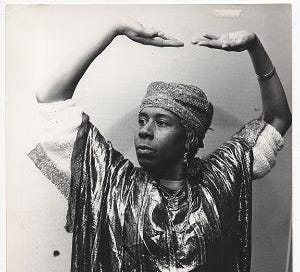




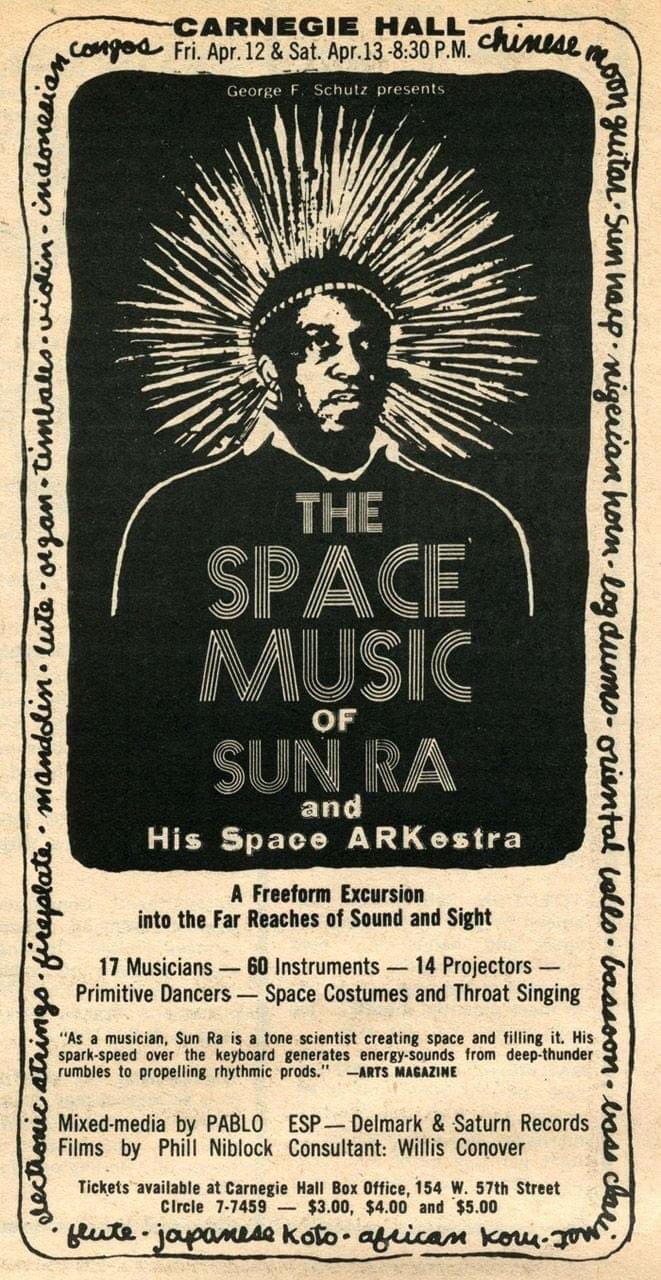
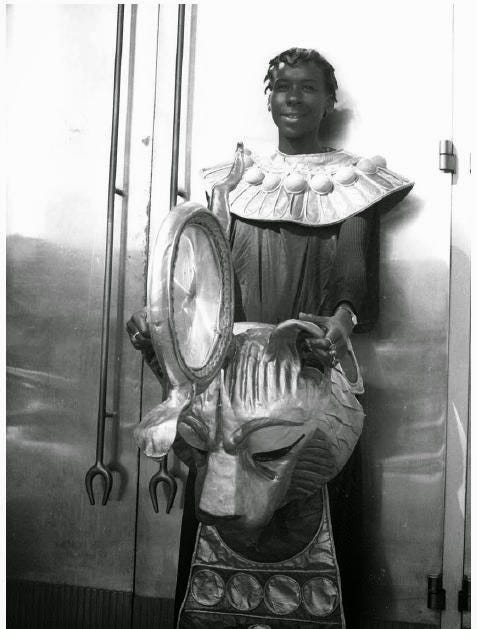
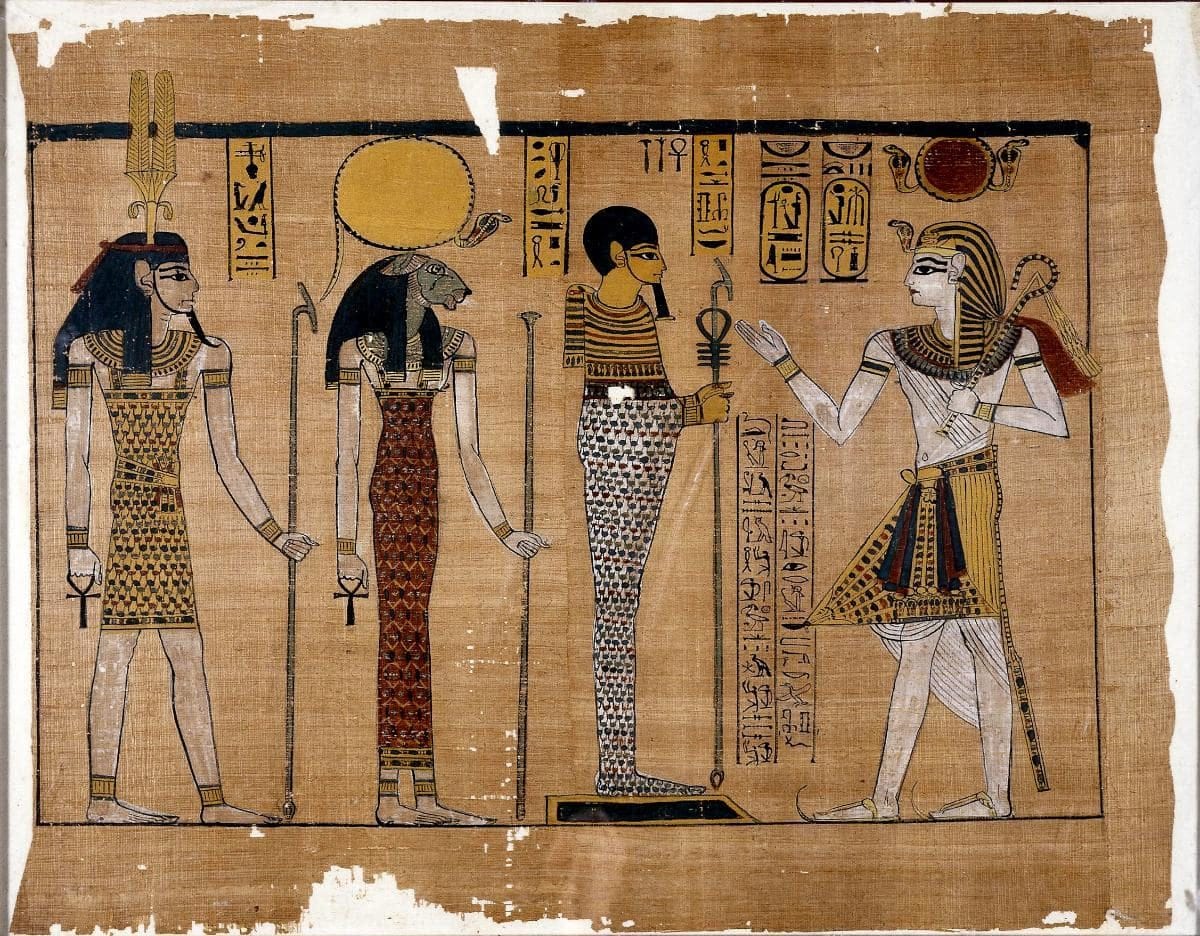

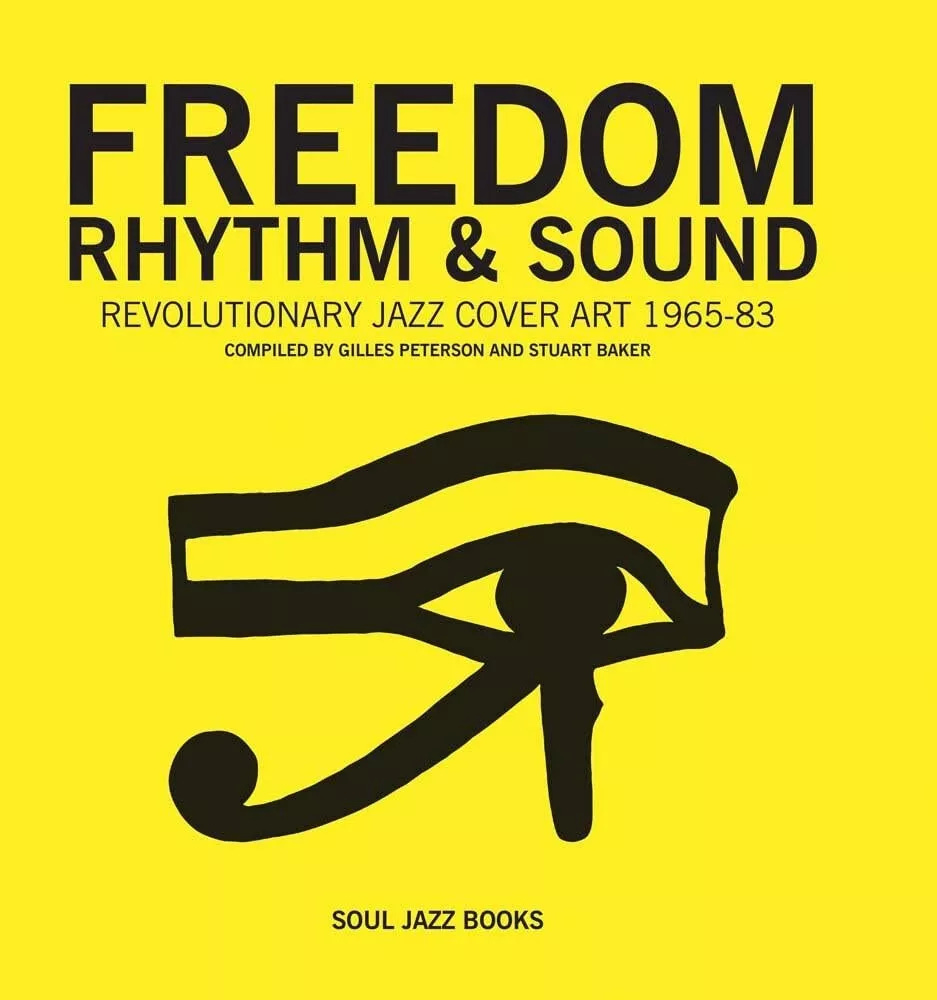
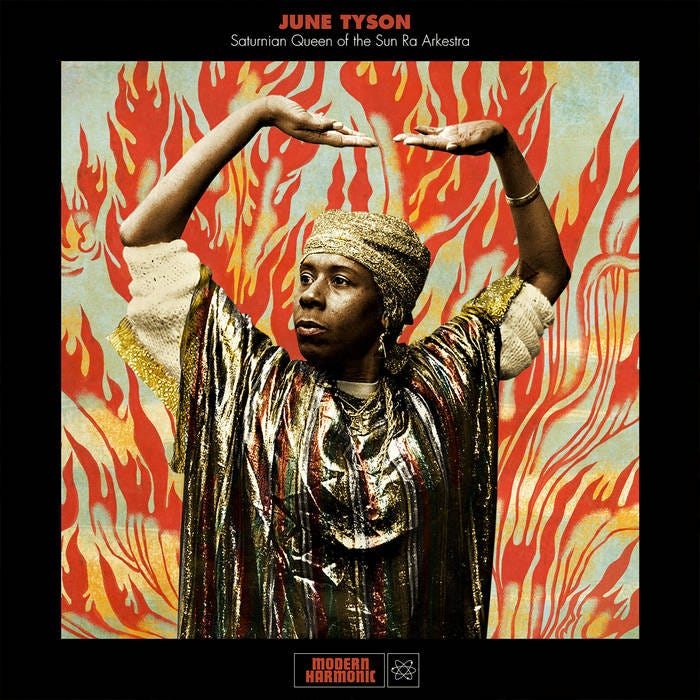
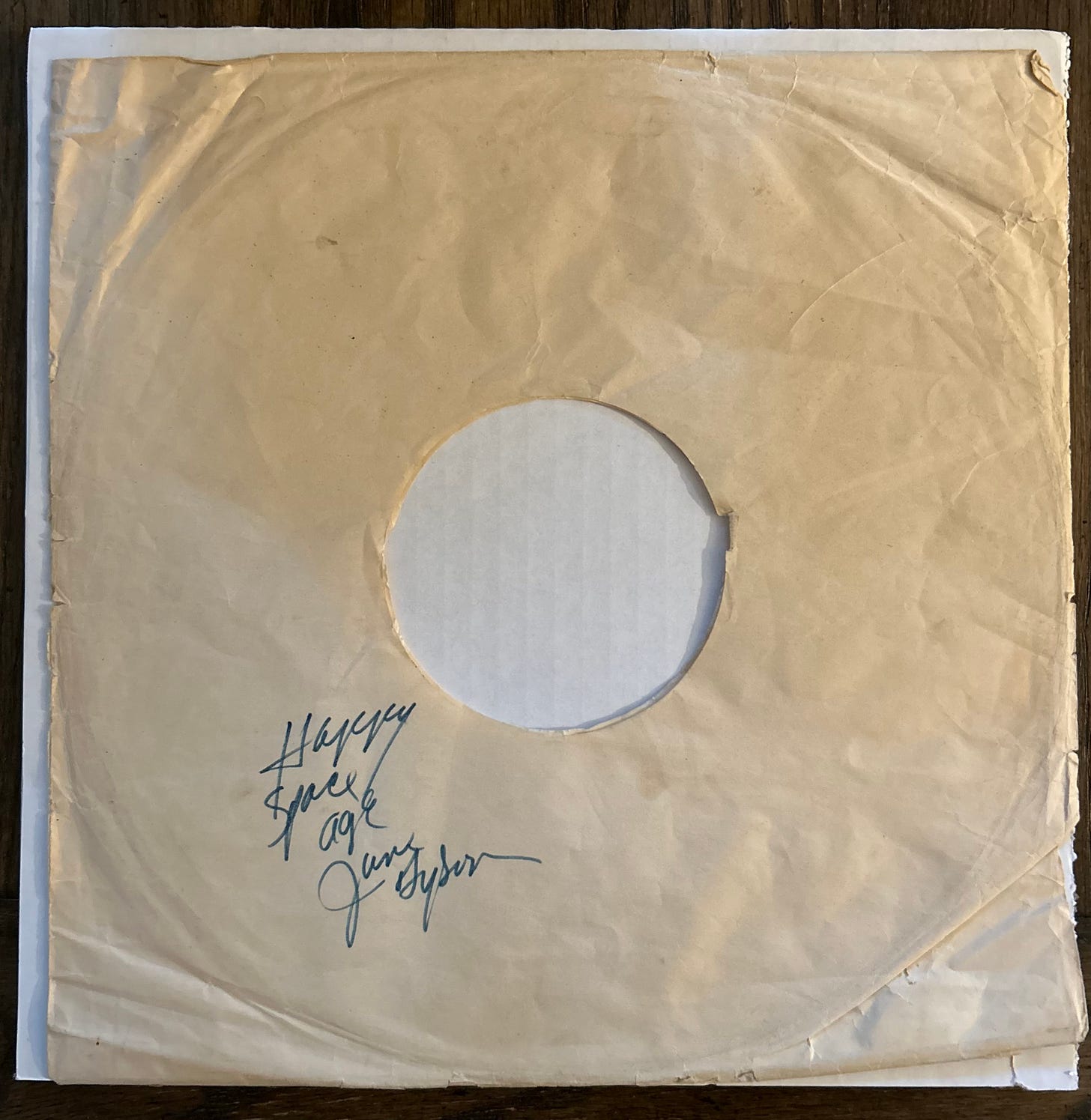
I went to Sun Ra’s house in 1988 on several occasions (interviewing him for a story in The Philadelphia Inquirer Sunday Magazine), I also attended his local concerts (there were many) and spoke with him on the phone at least 3 times a week. Once I asked June how it felt to be the only woman in the band. She responded, “I’m not here as a woman. I’m here as an angel.“ KB
My friend Mike Johnston of the Northwoods Improvisors, a Ra fanatic since the '60s, once made me a June Tyson mix-CD, culled from his mammoth Sun Ra collection. One of my prized possessions.